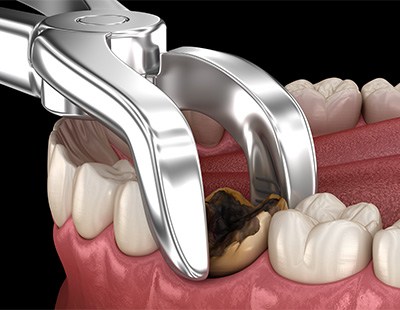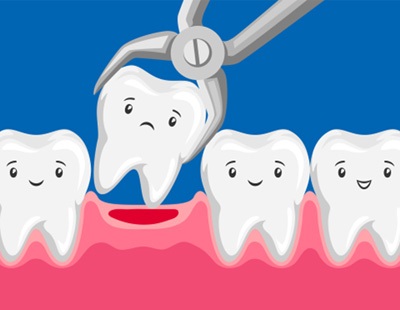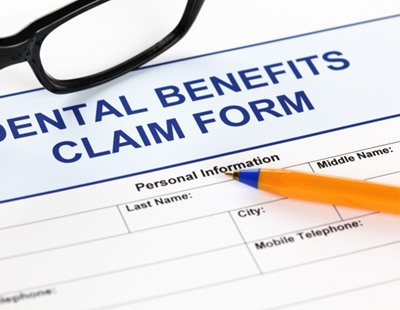Tooth Extractions – Ellicott City, MD
Safe, Straightforward
Tooth Removal
Saving your natural teeth whenever possible will always be your best option as far as oral health goes. However, if a tooth is putting nearby teeth at risk, or it cannot be effectively treated or restored, we may have no choice but to remove it. Don’t worry – our experienced, trained, and caring dental team at My Ellicott City Dentist will only recommend tooth extractions after considering every other possible option, and we’ll make sure that the process is performed comfortably without any unnecessary complications. If you think you may need a tooth extraction, then schedule an appointment with us today or keep reading to learn more about this emergency dental service.
Why Choose My Ellicott City Dentist for Tooth Extractions?
- Modern Techniques for Pain-Free Treatment
- Multiple Options for Tooth Replacement
- An Expert, Friendly Dental Team That Cares
Reasons Why Tooth Extractions Are Necessary

Tooth extractions are normally only performed under specific circumstances that require it. This includes:
- Decay that has already damaged or destroyed over two-thirds of the enamel
- Damage to the tooth structure that is beyond the point where it could be repaired
- Gum disease that has irreversibly destroyed the tooth’s support
- The need to make room for another type of treatment such as placing dentures or an orthodontic appliance
- Baby teeth that have failed to fall out when they were supposed to
The Process of Removing a Tooth

There are two ways we can remove a tooth: a simple extraction or a surgical extraction. A simple extraction is used when the tooth in question has broken through the gumline. In that case, we will thoroughly numb your mouth before gently gripping the tooth, rocking it loose, and removing it. A surgical extraction, on the other hand, is often used when the tooth that needs to be removed is trapped underneath the gumline. This requires us to make a small incision in the gums before removing the tooth piece by piece (this will help minimize bone loss). Again, you will be completely numb throughout the entire procedure, so you won’t feel any pain during your time in the treatment chair.
Tooth Extraction Aftercare

To ensure the healing period is as smooth, quick, and painless as possible, we will provide you with aftercare instructions like:
- Taking prescribed or over-the-counter pain medication as directed
- Not running, lifting weights, or participating in any other strenuous activities
- Drinking lots of water to stay hydrated (just don’t use a straw!)
- Brushing carefully around the extraction site
- Sticking to soft foods, like plain yogurt
- Avoiding all tobacco products and alcohol
- Keeping your head elevated while you sleep
Around the three-day mark, you should feel significantly better! If you don’t, your symptoms seem to be getting worse, or you develop a fever, then get in touch with us ASAP.
Understanding the Cost of Tooth Extractions

Many patients are hesitant to commit to dental treatment because they are worried about the cost. Everyone’s situation is unique, so the cost can vary. During your appointment with us, we will go over the cost of your treatment in detail, including all of your payment options. Until then, here are some things for you to take into consideration.
Factors That Can Affect Tooth Extraction Cost

There are multiple factors that contribute to the cost of tooth extractions. Here are the ones that make the biggest difference.
- Number of Teeth: The more teeth you need to have extracted, the higher the overall cost will be.
- Complexity: Depending on where your teeth are located in your mouth and whether they are impacted, the cost will vary. Some extractions are easier to perform than others, which require additional time.
- Tooth Replacement: If you need to replace your extracted tooth with a tooth replacement, you should consider this cost as well.
Does Dental Insurance Cover Tooth Extractions

Yes, tooth extractions usually receive between 50% and 80% coverage. However, it’s important to note that every insurance plan is a little bit different, so coverage amount can vary. We are proud to be in-network with numerous dental insurance procedures, including Delta Dental, Cigna, United Concordia, United Healthcare, and more! We are happy to fill out all of the necessary paperwork and fil necessary claims on your behalf to make this process as simple as possible.
How to Make Tooth Extractions Affordable

If you don’t have dental insurance, this doesn’t mean that you are completely out of luck. With our in-house membership club, you can save on procedures completed at our practice. We are also happy to accept payments through CareCredit. This third-party financing company can split the cost of your treatment into manageable monthly installments with little to no interest. If you have any questions or need help applying, don’t hesitate to contact us.
Tooth Extractions FAQs
Does Getting a Tooth Extracted Hurt?
Whether you need a simple extraction or a surgical extraction, you can rest easy knowing that the process of removing your tooth won’t hurt. That’s because the very first step of the treatment process is always the same: to numb your mouth thoroughly. Even after the numbing agent wears off (hours after the procedure), we will provide you with aftercare instructions to help prevent soreness, sensitivity, and other symptoms from arising.
Can I Leave the Space Empty After a Tooth Extraction?
There are some cases where leaving the space empty is recommended. For example, if your tooth was removed to address overcrowding prior to orthodontic treatment, then it should not be replaced. If, on the other hand, it was extracted due to severe damage, then it will need to be replaced. The good news is that advancements in technology and dentistry have made dental bridges, dentures, and dental implants more lifelike in look and feel than ever before. So, you don’t have to worry – no unwanted attention will be drawn to your smile.
What Can I Do to Speed Up the Healing Time?
Unfortunately, there isn’t a magic pill you can take that will heal you overnight. The key to a short recovery time (and avoiding problems like dry sockets) is following the aftercare instructions you were given, like changing the gauze pads as needed, eating only soft foods, and using a cold compress for 10 minutes at a time. Around the three-day mark, you should feel significantly better. Then, after about a week, you should get the green light to resume your usual routine.
How Should I Prepare for My Tooth Extraction?
In addition to providing you with helpful aftercare instructions, we will provide you with a list of to-dos prior to your procedure with the goal of making the entire process as smooth and stress-free as possible. A few examples include picking up OTC pain medication beforehand, not smoking, wearing something comfortable the morning of, and arranging for someone you know and trust to drive you to and from your appointment if you’re being sedated. As always, if you have any questions leading up to your visit, don’t hesitate to let us know; we’re here to help!
What Should I Eat Following My Tooth Extraction?
It’s important to wait an hour or two to eat anything (this allows the bleeding to slow down and the numbing agent to wear off). After that, you can eat extremely soft foods, like applesauce, plain yogurt, cottage cheese, and pudding. As the days go on, you’ll be able to incorporate more foods into your diet, like oatmeal, vegetable soup, and cooked carrots. Just make sure that you’re always checking the temperature first because your mouth is going to be more sensitive than usual.
I Need a Checkup & Cleaning I Have a Cavity or Broken Tooth I am Missing One or More Teeth I am Interested in Improving My Smile I am Looking for a Dentist for My Child I Want a Straighter Smile I am Worried about Bleeding Gums I am in Pain or Had an Accident I Want to Learn More About Sleep Apnea View Our Services


